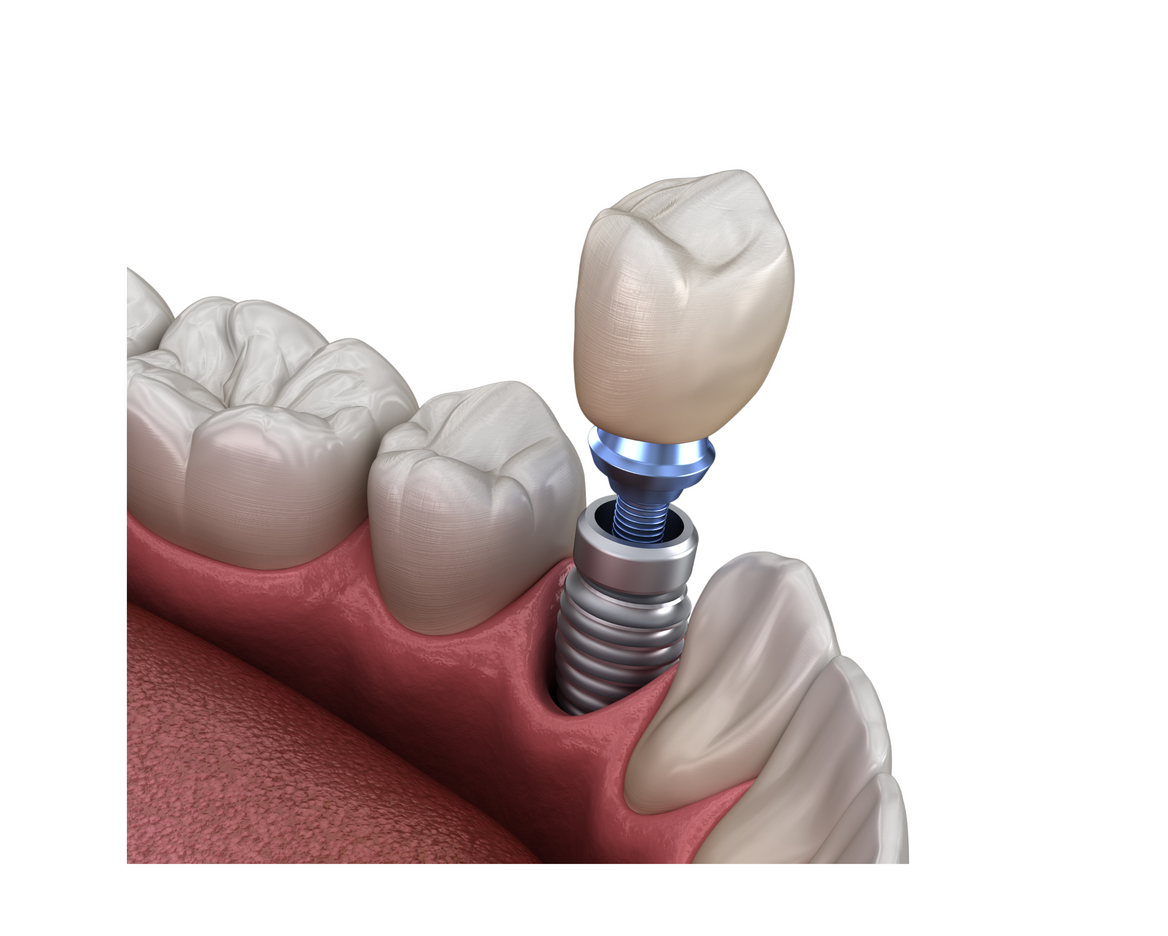IMPLANT DENTISTRY
At Kinard Dental Arts, we are focused on dental implants and focused on your forever smile.
Dental Implants in Central AR
Dental implants are a highly effective method of replacing missing teeth, providing long-term support. Implants can be used to replace a single tooth, multiple teeth, or larger prostheses such as dentures, depending on the individual’s needs and condition. Placement of the implant helps to maintain bone levels and can even prevent bone loss, providing greater stability in the long run. Additionally, dental implants do not require alteration of adjacent teeth, making them an ideal solution for replacing missing teeth.
Dental Implant Procedure
Dental implants require a series of steps to be completed in order to achieve the desired result. The exact process for each individual will depend on their oral health prior to the implant procedure.
Consultation and Dental Exam
A comprehensive dental exam will be conducted to determine if dental implants are a viable treatment option for you.


Tooth Extraction
If your situation requires it, we may need to extract the tooth/teeth that will be replaced by an implant(s). If there is bone loss around the area where the implant will be placed, we will perform a dental bone graft.
Implant placement
The implant will be surgically inserted into the bone and a healing cap will be placed over the implant to initiate the healing process.


Implant Healing
Osseointegration is the process that begins after a dental implant is placed. During this process, the jawbone heals and fuses with the implant, creating a strong foundation for the artificial tooth. Generally, it takes 4-6 months for the implant to integrate with the bone.
Abutment / Crown Placement
A small metal, typically titanium, abutment is used to attach an artificial tooth (crown) to an implant. The abutment is first fixed to the implant, and then the crown is placed on the abutment.

What is the procedure for dental implants?
Are dental implants safe?
The first step is having the dentist consult and visually examine the site in the mouth where the dental implant is being considered. Then the oral surgeon needs to consider if there are any current teeth that need to be extracted and which type of bone graft needs to be conducted. These procedures will take place first and the patient will be allowed a few months to heal to ensure an adequate and strong bone is present at the site of the implant.
Once this is determined, the dental implant is placed into the bone and a healing cap is placed over the implant so the healing phase can begin. This is followed by regular check-ups to ensure proper healing and that there is no infection around the place of surgery.
What are the benefits of dental implants?
A person suffering from tooth loss will experience many challenges. The most obvious of these challenges are difficulties when chewing and speaking clearly. When tooth loss is left untreated it can result in very serious problems like tooth shifts, jawbone deterioration, facial structure loss and bite imbalances. These issues usually develop over time when there is no root system to maintain bone health and alignment. Dental implants provide an artificial root system to maintain order and keep the remaining teeth in line.
They can not only help a patient overcome short-term challenges; they can also prevent long-term problems linked to tooth loss. They are the most effective method for treating tooth loss because dental implants serve as an artificial root system for supporting a prosthetic tooth and allow replacement teeth to feel more natural.
KINARD DENTAL ARTS' IMPLANT DOCTOR

